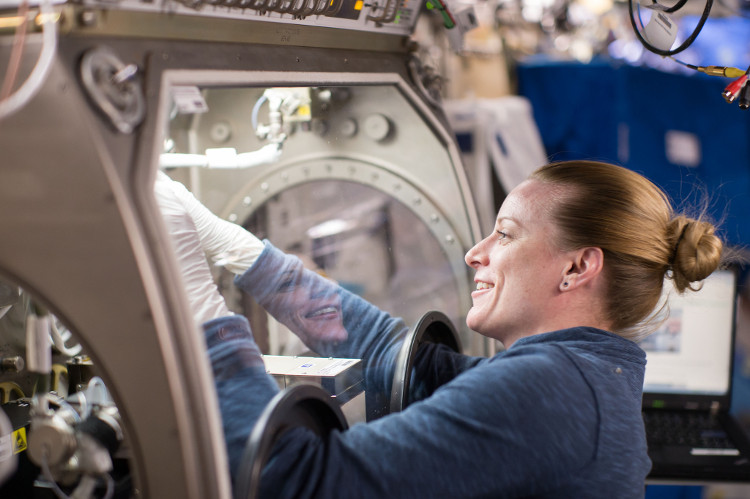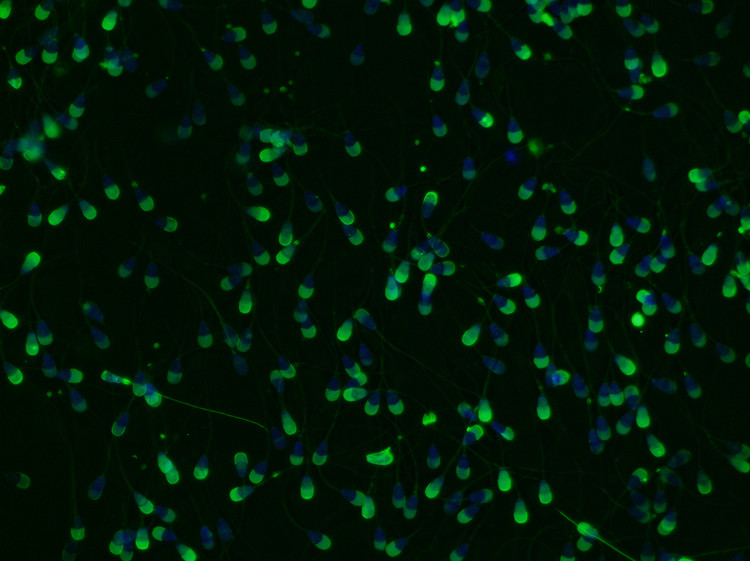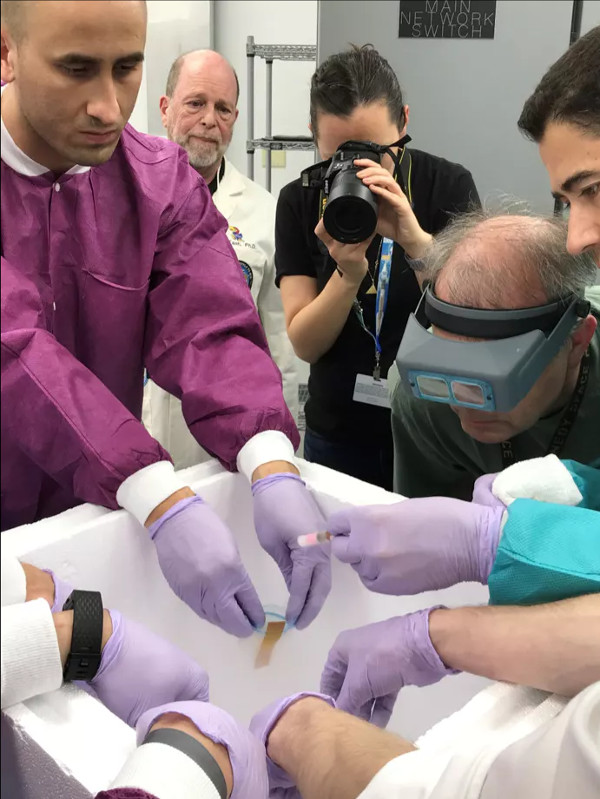NASA sends ... sperm to ISS space station
Samples of human and cow sperm have just followed NASA's SpaceX Dragon spacecraft to the ISS space station during the latest supply shipment.
NASA said the spacecraft brought more than 2.6 tons of goods, supplies, equipment and many used in the study, landed on the ISS space station on April 4. In it, two most special items are probably sperm and bone marrow, to serve special experiments.

A female scientist is working in the laboratory of the ISS space station - (photo: NASA).
In the article on its official website, NASA revealed human and cow sperm samples would be the material for the Micro-11 experiment.
As we all know, fertilization takes place when the sperm finds its own way and approaches the egg. However, it is the story that takes place on earth. Scientists want to find out how in the low-gravity environment of the space station, they will swim. The data collected is intended to assess the health of sperm when outside the earth as well as the factors that can be affected if fertilization takes place in space.

Cow sperm is fluorescent dyed to monitor - (photo: NASA).
After the frozen sperm samples are transferred to the space station, the scientists will thaw to conduct the experiment. Cow sperm is used first by dyeing the head with fluorescent material so that scientists can easily follow it.
In addition to swimming and overall health, these sperm are also monitored for acrosome reactions, a process of self-preparation of sperm to fertilize eggs. This process is not only critical to successful fertilization but also to the quality of embryos that are formed afterwards.

Ground scientists are packing special sperm packages before putting them on the spacecraft - (photo: NASA).
The experiment was run by NASA's Ames Research Center in Silicon Valley (California - USA). You may find it odd but this experiment is necessary for the future, as space research activities are expanding and people continue to aspire to build new settlements somewhere in space.
- NASA celebrates 40 years of the first space station project
- Strange experiment on space
- NASA built a space station in the middle of the moon
- NASA wants to sell ISS space station in the next 10 years
- NASA opened the International Space Station for ... tourists and film makers from 2020
- The uncertain future of the ISS space station when NASA returns to the Moon
- How much does NASA pay for each ticket to space?
- NASA has just revealed an exciting plan from now until 2030
- May 14: America's first space station is launched into space
- NASA launched a spacecraft after delaying
- Learning under Russia, NASA intends to sell travel tickets to ISS
- Walk outside the ISS station troubleshooting space
 Van Allen's belt and evidence that the Apollo 11 mission to the Moon was myth
Van Allen's belt and evidence that the Apollo 11 mission to the Moon was myth The levels of civilization in the universe (Kardashev scale)
The levels of civilization in the universe (Kardashev scale) Today Mars, the sun and the Earth are aligned
Today Mars, the sun and the Earth are aligned The Amazon owner announced a secret plan to build a space base for thousands of people
The Amazon owner announced a secret plan to build a space base for thousands of people